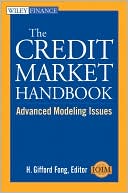Category Books
- Fiction Books & Literature
- Graphic Novels
- Horror
- Mystery & Crime
- Poetry
- Romance Books
- Science Fiction & Fantasy
- Thrillers
- Westerns
- Ages 0-2
- Ages 3-5
- Ages 6-8
- Ages 9-12
- Teens
- Children's Books
- African Americans
- Antiques & Collectibles
- Art, Architecture & Photography
- Bibles & Bible Studies
- Biography
- Business Books
- Christianity
- Computer Books & Technology Books
- Cookbooks, Food & Wine
- Crafts & Hobbies Books
- Education & Teaching
- Engineering
- Entertainment
- Foreign Languages
- Game Books
- Gay & Lesbian
- Health Books, Diet & Fitness Books
- History
- Home & Garden
- Humor Books
- Judaism & Judaica
- Law
- Medical Books
- New Age & Spirituality
- Nonfiction
- Parenting & Family
- Pets
- Philosophy
- Political Books & Current Events Books
- Psychology & Psychotherapy
- Reference
- Religion Books
- Science & Nature
- Self Improvement
- Sex & Relationships
- Social Sciences
- Sports & Adventure
- Study Guides & Test Prep
- Travel
- True Crime
- Weddings
- Women's Studies
Credit Market Handbook: Advanced Modeling Issues »

Authors: H. Gifford Fong
ISBN-13: 9780471778622, ISBN-10: 0471778621
Format: Hardcover
Publisher: Wiley, John & Sons, Incorporated
Date Published: February 2006
Edition: (Non-applicable)
Author Biography: H. Gifford Fong
H. GIFFORD FONG. Is President of Gifford Fong Associates, a firm specializing in fixed income, derivative product analysis, and asset allocation. He is also Editor of the Journal of Investment Management (JOIM). Mr. Fong has received a number of honors, including the Institute for Quantitative Research in Finance Award and the Financial Analysts Journal’s Graham and Doff Award of Excellence. He is also coauthor of Fixed Income Portfolio Management and Advanced Fixed Income Portfolio Management.
Book Synopsis
In The Credit Market Handbook, financial expert and Editor H. Gifford Fong has assembled a group of prominent professionals and academics familiar with the credit arena. In each chapter, a different expert analyzes a different issue related to today’s dynamic credit market, including portfolio credit risk, valuation models, and the importance of modeling credit default.
In bringing together these noted authors and their work, Fong provides you with a rich framework of research in the area of credit analysis. Some of the topics discussed within this comprehensive guide include:
- Estimating default probabilities implicit in equity prices
- Structural versus reduced form models: a new information-based perspective
- Valuing high-yield bonds
- Predictions of default probabilities in structural models of debt
- And much more
Filled with in-depth insight and expert advice, this invaluable resource offers you the critical information you need to succeed within today’s credit market.
Table of Contents
Introduction.
Executive Chapter Summaries.
CHAPTER 1: Estimating Default Probabilities Implicit in Equity Prices (Tibor Janosi, Robert Jarrow, and Yildiray Yildirim).
Introduction.
The Model Structure.
Description of the Data.
Estimation of the State Variable Process Parameters.
Equity Return Estimation.
Analysis of the Time Series Properties of the Parameters.
Analysis of Fama–French Four-Factor Model with No Default.
Analysis of a Bubble Component (P/E ratio) in Stock Prices.
Analysis of the Default Intensity.
Relative Performance of the Equity Return Models.
Comparison of Default Intensities Based on Debt versus Equity.
Conclusions.
Notes.
References.
Appendix.
CHAPTER 2: Predictions of Default Probabilities in Structural Models of Debt (Hayne E. Leland).
Introduction.
Recent Empirical Studies.
Structural Models and Default Risk.
The Default Boundary in Exogenous and Endogenous Cases.
The Default Probability with Constant Default Barrier.
Calibration of Models: The Base Case.
Matching Empirical Default Frequencies with the L-T Model.
Matching Empirical DPS with the L-S Model.
The Moody’s–KMV Approach.
Some Preliminary Thoughts on the Relationship Between the KMV Approach and L-S/L-T.
Conclusions.
Acknowledgments.
Postscript.
Appendix.
Notes.
References.
CHAPTER 3: Survey of the Recent Literature: Recovery Risk (Sanjiv R. Das).
Introduction.
Empirical Attributes.
Recovery Conventions.
Recovery in Structural Models.
Recovery in Reduced-Form Models.
Measure Transformations.
Summary and Speculation.
References.
CHAPTER 4: Non-Parametric Analysis of Rating Transition and Default Data (Peter Fledelius, David Lando, and Jens Perch Nielsen).
Introduction.
Data and Outline of Methodology.
Estimating Transition Intensities in Two Dimensions.
One-Dimensional Hazards and Marginal Integration.
Confidence Intervals.
Transitions: Dependence on Previous Move and Duration.
Multiplicative Intensities.
Concluding Remarks.
Acknowledgments.
Notes.
References.
CHAPTER 5: Valuing High-Yield Bonds: A Business Modeling Approach (Thomas S. Y. Ho and Sang Bin Lee).
Introduction.
Specification of the Model.
A Numerical Illustration.
Empirical Evidence.
Implications of the Model.
Conclusions.
Acknowledgments.
Appendix.
Notes.
References.
CHAPTER 6: Structural versus Reduced-Form Models: A New Information-Based Perspective (Robert A. Jarrow and Philip Protter).
Introduction.
The Setup.
Structural Models.
Reduced-Form Models.
A Mathematical Overview.
Observable Information Sets.
Conclusion.
Acknowledgment.
Notes.
References.
CHAPTER 7: Reduced-Form versus Structural Models of Credit Risk: A Case Study of Three Models (Navneet Arora, Jeffrey R. Bohn, and Fanlin Zhu).
Introduction.
Merton, Vasicek–Kealhofer, and Hull–White Models.
Data and Empirical Methodology.
Results.
Conclusion.
Acknowledgments.
Notes.
References.
CHAPTER 8: Implications of Correlated Default for Portfolio Allocation to Corporate Bonds (Mark B. Wise and Vineer Bhansali).
Introduction.
A Model for Default.
The Portfolio Problem.
Sample Portfolios with Zero Recovery Fractions.
Sample Portfolios with Nonzero Recovery Fractions.
Concluding Remarks.
Acknowledgments.
Notes.
References.
CHAPTER 9: Correlated Default Processes: A Criterion-Based Copula Approach (Sanjiv R. Das and Gary Geng).
Introduction.
Description of the Data.
Copulas and Features of the Data.
Determining the Joint Default Process.
Simulating Correlated Defaults and Model Comparisons.
Discussion.
Acknowledgments.
Appendix: The Skewed Double Exponential Distribution.
Notes.
References.
Index.
Subjects
 Economics
Economics  Economics - Mathematical & Quanitative Methods
Economics - Mathematical & Quanitative MethodsBusiness Books
 Management & Leadership
Management & Leadership  Risk Management
Risk ManagementBusiness Books
 Professional Finance & Investing
Professional Finance & Investing  Credit & Debt
Credit & DebtScience & Nature
 All Science & Nature
All Science & Nature  Mathematics
MathematicsNonfiction
 Science & Nature
Science & Nature  Mathematics
MathematicsNonfiction
 Science & Nature
Science & Nature  All Science & Nature
All Science & Nature
